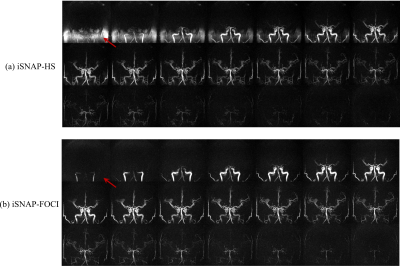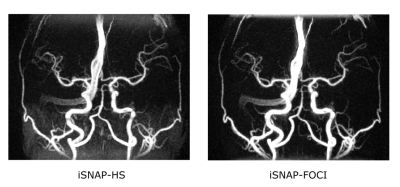Kaiyu Zhang1, Zhensen Chen1,2, Rui Li2, Huijun Chen2, Niranjan Balu1, and Chun Yuan1,2
1Vascular Imaging Lab and BioMolecular Imaging Center, Department of Radiology, University of Washington, Seattle, WA, United States, 2Center for Biomedical Imaging Research, Tsinghua University, Beijing, China
1Vascular Imaging Lab and BioMolecular Imaging Center, Department of Radiology, University of Washington, Seattle, WA, United States, 2Center for Biomedical Imaging Research, Tsinghua University, Beijing, China
Multi-contrast images including hemodynamic information in one sequence have significant impact in evaluating intracranial vessels. We proposed to use FOCI inversion pulse combined with the multi-contrast sequence iSNAP to further improve image quality of dynamic and static MRA.

